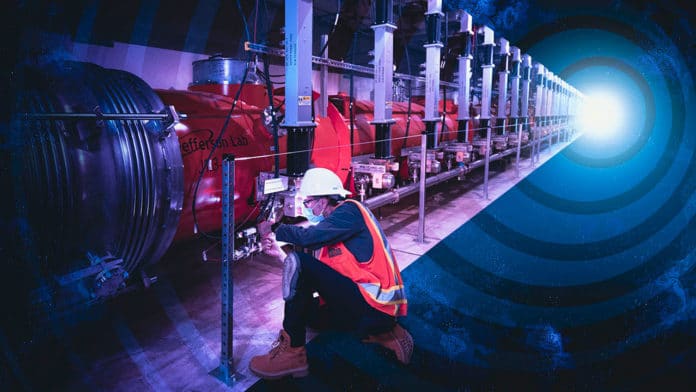A powerful upgrade to the Linac Coherent Light Source (LCLS) X-ray free-electron laser, LCLS-II upgrade uses temperatures colder than deep space to accelerate electrons to near light speed and fire off a million X-ray bursts per second. The crews have successfully cooled the new superconducting particle accelerator to minus 456 degrees Fahrenheit (2 kelvins), a temperature at which it becomes superconducting and can boost electrons to high energies with nearly zero energy lost in the process.
It is one of the milestones before LCLS-II will produce X-ray pulses that are 10,000 times brighter than those of LCLS and that arrive up to a million times per second – a world record for today’s most powerful X-ray light sources.
“In just a few hours, LCLS-II will produce more X-ray pulses than the current laser has generated in its entire lifetime,” says Mike Dunne, director of LCLS. “Data that once might have taken months to collect could be produced in minutes. It will take X-ray science to the next level, paving the way for a whole new range of studies and advancing our ability to develop revolutionary technologies to address some of the most profound challenges facing our society.”
LCLS, the world’s first hard X-ray free-electron laser (XFEL), produced its first light in April 2009, generating X-ray pulses a billion times brighter than anything that has come before. In 2013, SLAC launched the LCLS-II upgrade project to boost that rate to a million pulses and make the X-ray laser thousands of times more powerful.
For this to happen, crews removed part of the old copper accelerator and installed a series of 37 cryogenic accelerator modules, which house pearl-like strings of niobium metal cavities. These are surrounded by three nested layers of cooling equipment, and each successive layer lowers the temperature until it reaches nearly absolute zero – a condition at which the niobium cavities become superconducting.
The LCLS-II superconducting accelerator operates at 2 kelvins, only about 4 degrees Fahrenheit above absolute zero. It does this by piping liquid helium coolant into the modules from two large helium cryoplants.
In addition to a new accelerator and a cryoplant, the project required other cutting-edge components, including a new electron source and two new strings of undulator magnets that can generate both “hard” and “soft” X-rays. Hard X-rays can image materials and biological systems at the atomic level, while soft X-rays can capture how energy flows between atoms and molecules.
In April, the new accelerator reached its final temperature of 2 K for the first time, and the instrument is now ready for its initial operations. LCLS-II is expected to produce its first X-rays later this year. Both X-ray lasers will work in parallel, allowing researchers to conduct experiments over a wider energy range, capture detailed snapshots of ultrafast processes, probe delicate samples and gather more data in less time, increasing the number of experiments that can be performed.
It is expected that the facility will soon sharpen our view of how nature works on ultrasmall, ultrafast scales, impacting everything from quantum devices to clean energy.
